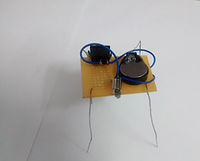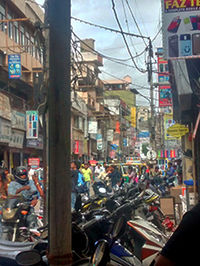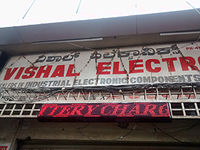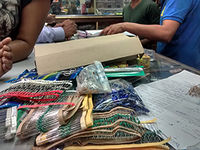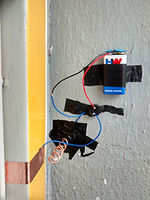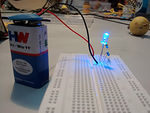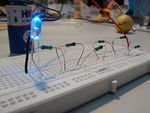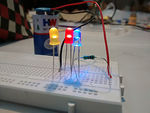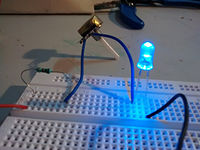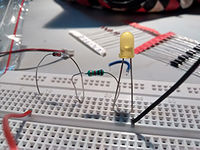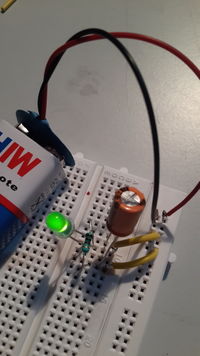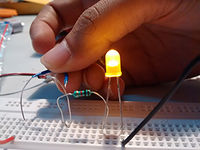Bhawna
Contents
Micro Robots -Day1
I eagerly entered the class that I had waited for quite some time, looking forward to some hands-on work and to further explore my interest in electronics. The idea of making a robot in the first class was exciting although it was the most basic circuit, this was the first time I was doing this stuff practically. Understanding the connections along with the soldering experience was an assertion of my interest.
Trip to S.P.Road -Day2
From figuring out the extensive list of materials to the bus routes to S.P. Road and finding the exact shop was a bit of a task. The market was loaded with all kinds of hardware, tools and electronics shops. The time and effort it took to buy all the components was unbelievable. We spent about 5 hours at the shop counting, negotiating, bargaining to make do with. The shopkeeper, although had to put up with all our tantrums, offered us some refreshing drinks as a gesture that I think was welcomed by most of us in the heat. It was a good feeling to be able to recognize the components at the shop, considering the long list.
Project-Lemon Battery
This was an easy one since this is something that is taught in textbooks in schools, so it was easy to recall. I used zinc galvanized nail (SS nail found in a hardware shop near dairy cross) as the anode or the negative terminal and a copper wire (found in an electrical shop near dairy cross) as the cathode or the positive terminal. Stuck the two in the lemon making sure that they do not touch. Although the battery did work according to the voltage reading on the multimeter (fluctuating reading) but it was not enough voltage to light an led.
Making the first Sensor -Day3
My group brainstormed on various ideas of what an action and reaction of a switch could be and we finally came up with an idea similar to that of a door alarm, where it basically buzzed when the door was open. So the action of opening the door was switch on, whereas closed door would mean that the switch is off. This exercise brought a lot of different meaning to the switch in terms of what it could be in a circuit further allowing a lot of different applications for a switch.
Components- Resistance
Since I could recall the concept of resistors from my class 12th physics it was relatively easier for me to follow the class and create circuits successfully.
Components:potentiometer, capacitor, diode -Day4
Since I'm familiar with the concepts of a potential divider, capacitor, and diode since school time, following the circuits was easier and made a lot of sense as I recalled my lessons. Although I have never really used these components on circuits like this, so figuring out how the connections work and what side goes where was a first. Still applying these concepts in a circuit of my own would be a hard task, for example, the capacitor in theory stores charge but once we connected it the charge stored was capable of lighting the led for merely a second, such applications would require a further study of these components.
More Components: Transistors -Day5
During my class 12th, the chapter on semiconductors and transistors was one of my favourites but I never got to see its actual functioning and how the amplifying or controlling aspect of the transistor would work. This was the class that I enjoyed the most although it was a bit more work to follow the circuit since it was a bit more complicated from what we had been doing. And it required a lot of patience to figure out the knee point resistance that was required to replace the potentiometer from the initial circuit and eventually control the led brightness using an LDR. And the effect of light and everybody else's shadows in the room did not make it easy to fix on one value as the LDR's resistance kept variating accordingly.
